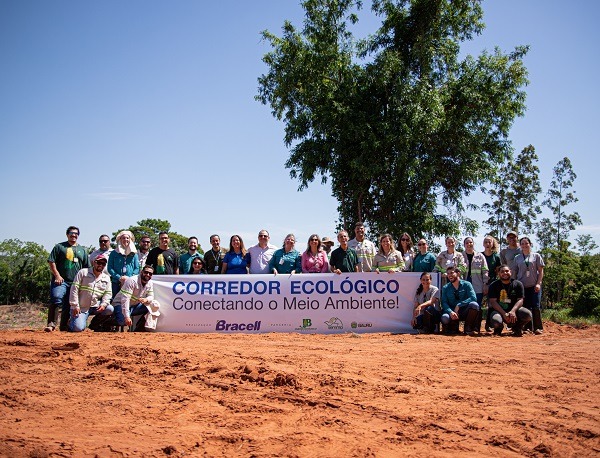No less than 253 species of birds from 51 different families have been identified in Bracell’s areas in Bahia.
The birds were spotted in the company’s High Conservation Value Areas (HCVA) and in four plantation areas during the first Avifauna monitoring campaign conducted by the Environmental and Certification team of the Company.
“This corresponds to 35% of the total bird population already described for the state of Bahia,” said biologist Silvio Lima.
“This representative sample greatly demonstrates the importance of the environmental monitoring activities developed by the company in line with its commitment to perform sustainable management actions inside its areas,” said Lima. The survey included the company’s four HCVAs and also the Sergipe, Cachoeira, Bonfim and Olhos d’Água projects.
According to data presented in the campaign, among the species identified, 10 are threatened with extinction: Touit surdus, Amazona rhodocorytha, Xipholena atropurpurea, Conopophaga melanops nigrifrons, Automulus lammi, Herpsilochmus pectoralis, H. pileatus, Myrmotherula urosticta, Pyriglena atra and Sporagra yarrellii. Herpsilochmus pileatus is the only endangered species restricted to restingas and muçunungas, types of forest unique to Brazil. “These results further prove the need for preservation of these areas,” said Lima.
The monitoring served to broaden the range of occurrence of some specimens that had not yet been identified in the state of Bahia, such as the Yellow-backed Tanager (Hemithraupis flavicollis melanoxantha) and Pernambuco Foliage-gleaner (Automolus lammi) which are known to inhabit the Pernambuco Endemism Center which covers the states of Alagoas, Pernambuco, Paraíba and Rio Grande do Norte.
Lima clarifies that “the situation is also observed in the case of two bird species more typical of the south, ie the Grey-rumped Swift (Chaetura cinereiventris) and the Olivaceous Elaenia (Elaenia mesoleuca). While those species may not be listed as endangered and endemic, they extend their range of occurrence up the north with records from this work.”
Of the total number of species identified, 32 are endemic to one biome. Of these, 24 belong to the Atlantic Forest (18% of the endemic species of the biome in the state), seven to the caatinga (43%), and one to the cerrado (7%).
Environmental and Certification Coordinator Meryellen Baldim said that hunting has been the main threat facing this group, mainly by wild animal breeders and dealers. “Our biggest challenge is to curb the action of hunters, especially in the HCVAs and, consequently, increase data on species richness and abundance,” Baldim said.




